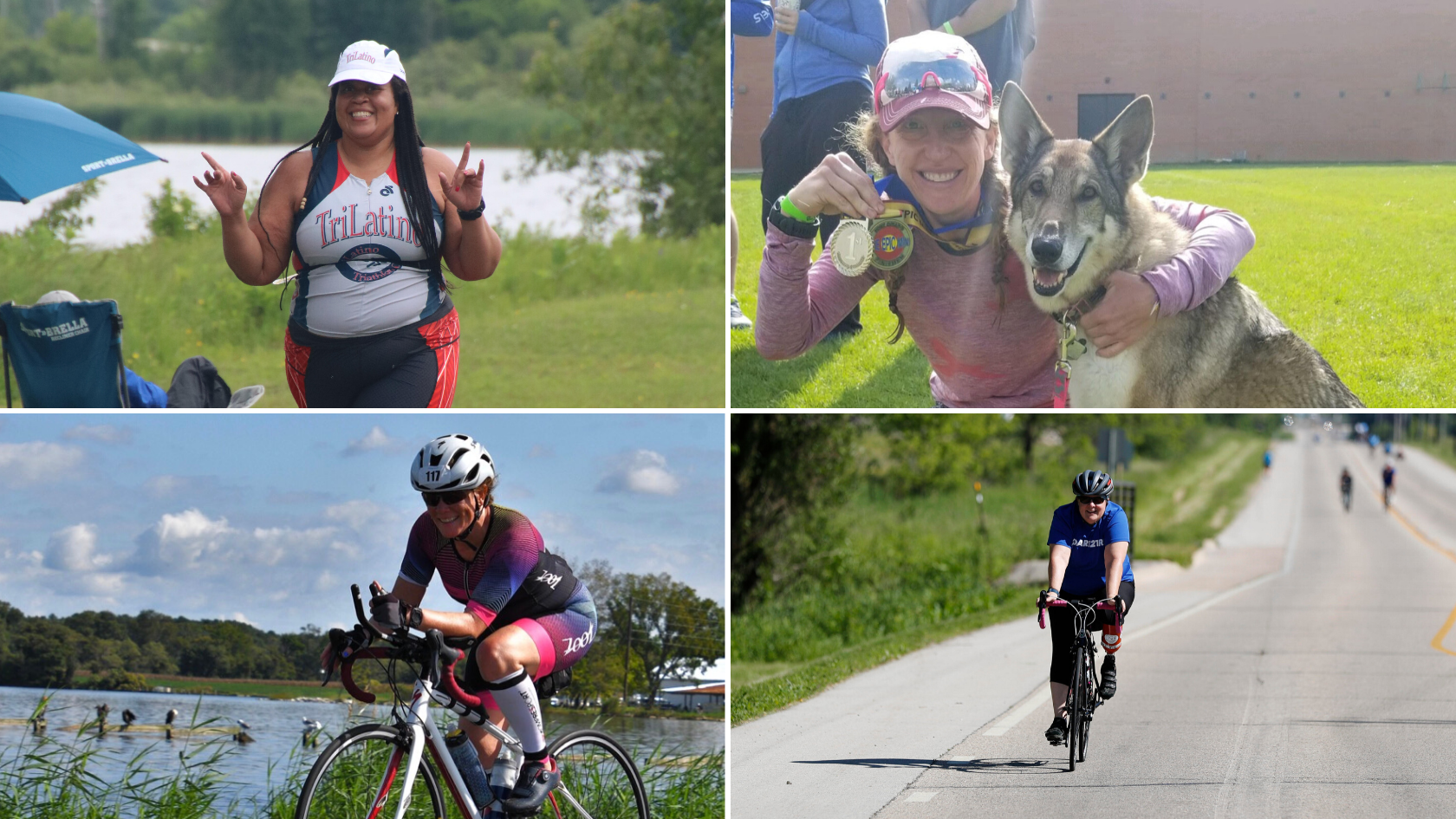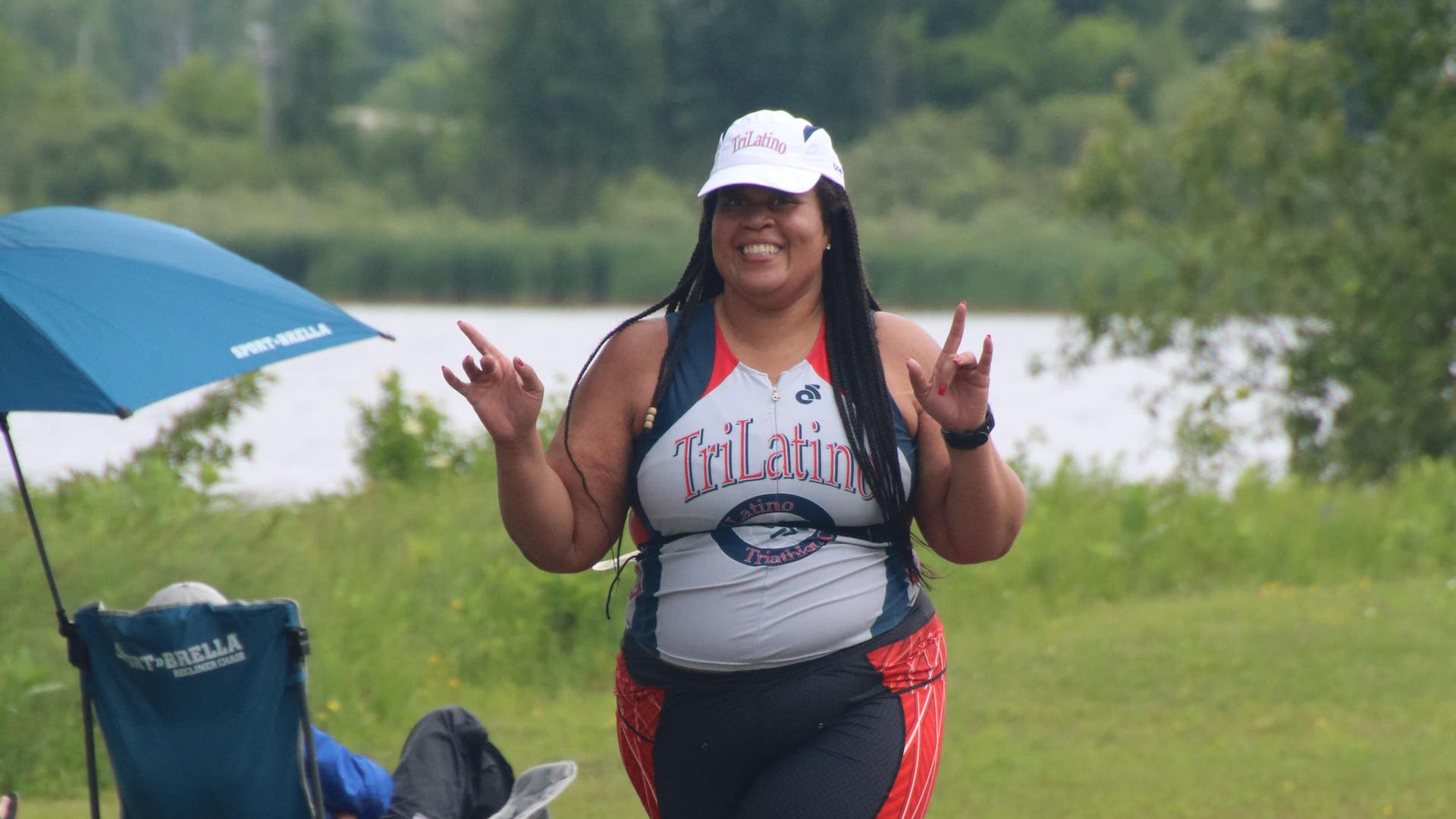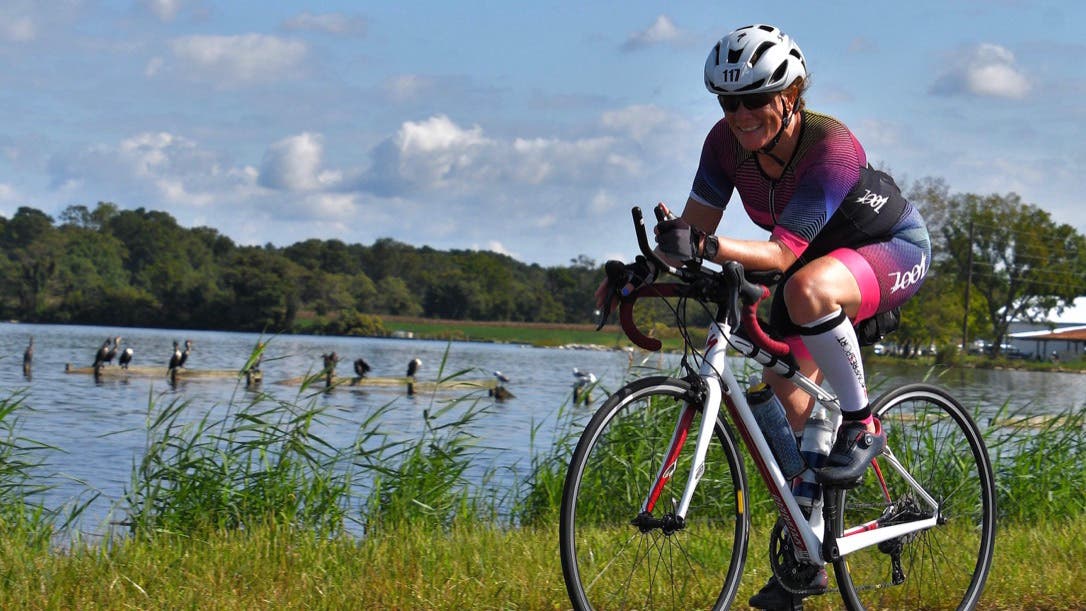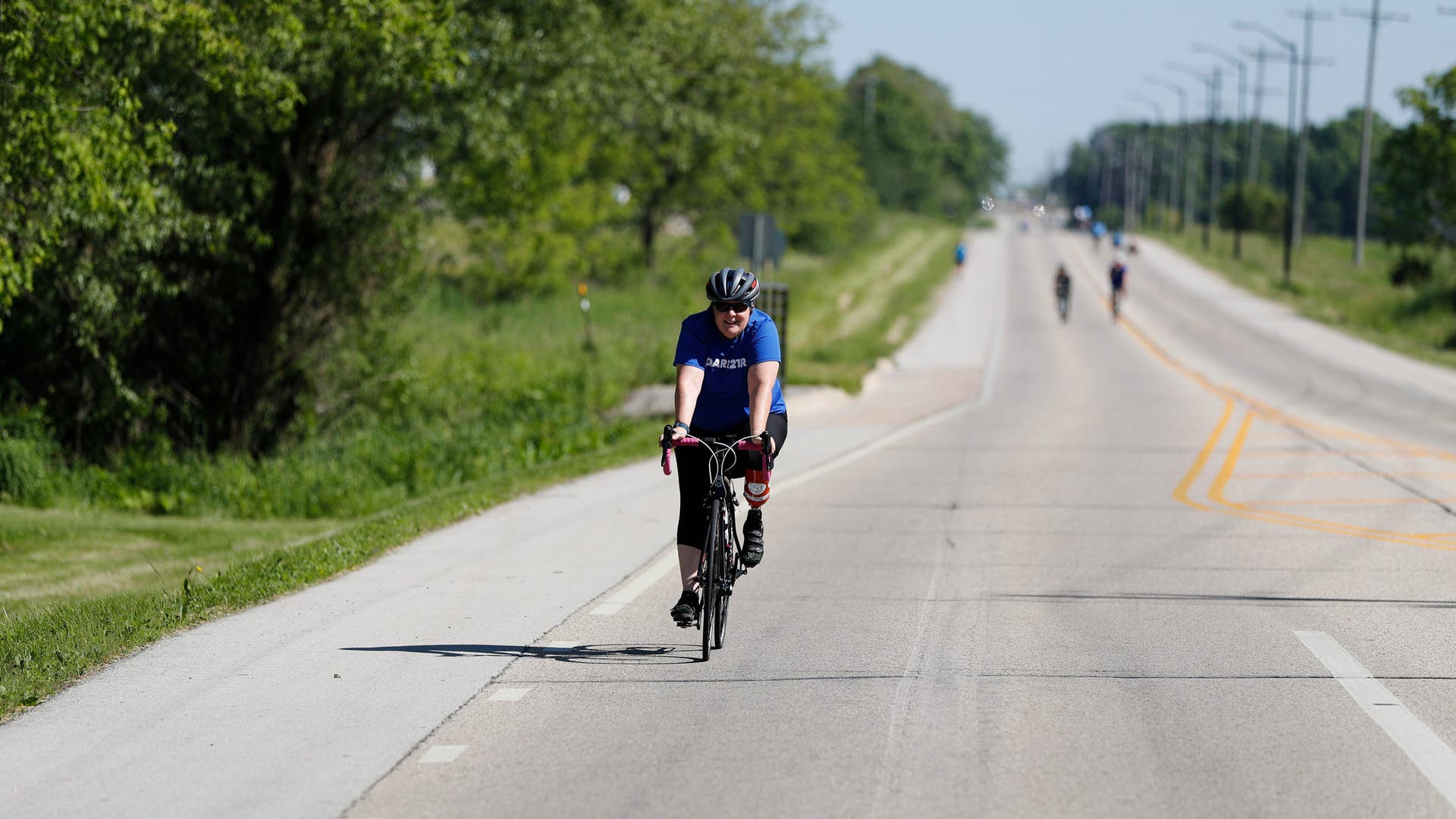How the COVID-19 Pandemic Affects Different Triathletes Differently

For several weeks, as we all faced activities restrictions and the fear of illness, the COVID-19 pandemic was being called “the great equalizer.” Weren’t we all in this same boat together? Yet, as the pandemic has gone on, that’s proven to clearly not be the case. Disparities inside and outside our sport are being illuminated, some under a very bright and persistent light. The experience of the pandemic is far from universal.
Here’s how it looks different for different triathletes, as they try to stay healthy, safe, and sane.
Where You Live
Lisa Kay Davis, a board member for the NYC-based triathlon club, Tri Latino, lives in what has been dubbed the epicenter of the virus. “What is unique to New York City is our communities are affected deeply by the virus,” she said. “Most of us know folks who have lost life or who are in the hospital with the virus as the numbers are larger here. This affects how households manage care, earn income, resources and more. One athlete’s experience in another city or state can be completely different from what an athlete in New York City is experiencing. We always have to consider those factors.”

Your Stress Level
Disparities emerge also in how triathletes talk about quarantine. Platitudes flooded social media in the last few months encouraging us to take advantage of all this free time to exercise or learn a new skill. However, many people are stressed and learning a new skill or hitting a new PR is an eyebrow raising proposition. Evelyn Baker was part of the team developing Denver’s city-wide pandemic response as it happened. She worked around the clock in the first few weeks of the COVID-19 shutdown, leaving her little time or energy for training. For many triathletes deemed essential workers, there has been no such thing as free time or working from home.

“Once we got things set up and all of our systems were operational again, I was able to move to a mostly work-from-home set up,” Baker said. “But even then, I found it challenging to get back into the training groove. Looking back on it I think I was experiencing a different kind of exhaustion—more mental than physical—and had to let myself recharge for a minute before restarting my training.”
The mental health toll of being isolated or having to witness sickness and death at such high rates has affected many athletes. Yet, Davis also highlights how training can be a means of escape: “This is a time of incredible stress and unsteadiness. For me, tri training has been a release.”
The human connection is something many triathletes are yearning for right now. Tristen Rogers, USAT coach and owner of Colorado-based HAT Altitude Team and HAT House Endurance Camps, feels the relationships she built in her coaching business prior to COVID-19 have sustained her, her business, and her clients during this difficult time. Unlike some coaches, Rogers said she hasn’t experienced any athlete attrition. She attributes this to people needing the “structure and consistency of training.” Having “a ‘constant’ in their lives when everything is so confusing or unsure” has helped many get through, she said.
Your Job & Financial Situation
Marcus Fitts, USAT coach and founder of District Triathlon agrees. “The ability to train and have goals to look forward to provides new motivation to maintain positive health and mindfulness through this pandemic.” This has been especially important, he said, as the U.S.’s response to COVID-19 has made “clear there are still huge health disparities in the U.S. among the Black community.” Minority groups remained some of the hardest hit by the pandemic, because of a combination of healthcare access, the healthcare system’s response, and a high number of historical pre-existing conditions stemming from decades of unequal access.
Fitts is riding out the quarantine in Los Angeles. He lost his job due to the pandemic: “It was a hard hit emotionally and financially.” He’s not alone. The U.S. currently has record unemployment at 42 million people, only eclipsed by the numbers seen during the Great Depression. Races have been canceled leaving many race directors without a viable income in 2020, trying to piece together how they can pivot fast enough to virtual racing and keep people invested. Coaches have felt the ripples of the economic crater left by COVID-19 too, with athletes terminating services due to their inability to pay. While Fitts sees quarantine as “a blessing and a curse,” he said, “training, paying for, or looking forward to a race of any kind fell to the bottom of the priority list for many people.”
Molly Lethert, a self-proclaimed “back of the packer” para-athlete from Minnesota, also lost her job because of COVID-19. “Our family business works with indoor dining, so we have been unable, and are still unable, to work.” Lethert uses a prosthetic running blade and has used the time afforded to her through unemployment to gain confidence running on the treadmill, an activity she previously found challenging because of her balance. However, despite the training benefits she has experienced, she worries about her short-and-long-term participation in triathlon. “I don’t have much in the way of excess money to spend on anything outside of living expenses,” she said.

Your Access to Facilities
With gyms still closed in many places and fears of spreading the virus still deeply felt, many triathletes have been cautious to venture back outside. Not everyone has access to a treadmill or indoor trainer. Melissa Babich started chemo treatment for cancer a few months after completing her first 70.3. Chemo puts her at an increased risk of developing complications if she contracts the virus. She has not been able to run, bike, or swim and is rarely able to get outside to even walk because of fatigue and risk. With so few people wearing face masks in her community, she’s found it very challenging to stay active. “After years of training nearly every day, my goal these days is a walk around the neighborhood with Cinnamon (my pup). I can’t leave the house really, for everyone’s safety. I don’t want to get COVID-19, and don’t want to get anyone else sick.”

Your Family Obligations
Many triathletes have also not been able to train because their children need home-schooling and the dual demands of work and childcare take precedence. The emerging research is telling us women, overall, have been most hard hit by the increased workload at home during the pandemic. In fact, women of color are faring even worse than their white counterparts, experiencing greater levels of unemployment while the virus ravages their communities at higher rates than it does white communities. The latest data is predicting a “shesession”—ie. a greater number of women left unemployed and a greater number who will remain out of work as a result of COVID-19. The professions most deeply affected by the pandemic are dominated by women workers, particularly by women of color.
Melanie Mitchell, founder of Poppy Sports, a mentoring community for women involved in sport, recently polled several women endurance athletes about their experiences during the pandemic. She heard many similar stories from women experiencing overwhelm, fatigue, a lack of concentration, social isolation, and a loss of fitness. They shared struggles with balancing work, home-schooling, and training. “One woman told me most of her children’s classes start on the hour, same as her work meetings,” she said, which meant the woman is always late to her meetings. “She is rarely offered any grace for her lateness. Many businesses have not adapted their meeting start times to accommodate parents in this situation.”
Where Triathletes Go From Here
As states begin to reopen, uncertainty still hangs over the triathlon community. What will training, coaching, and racing look like next year or five years from now? Is it forever changed? Many triathletes have had their lives turned upside down; for others, safety is their primary concern. Training groups, the joy of a celebratory hug as you cross the finish line, and the adrenaline spike of the chase in the final quarter mile of a race will all look and feel different. There is likely no one right answer to these questions.
Triathletes are a resilient bunch. Yet, even as we all complete the same race courses, how hard it is to get to the start line—much less the finish—can vary drastically from group to group depending on our ability to train, our financial situation, our communities, and the other challenges we have to face in our lives. This pandemic is no different. It’s one long race. While some of us may be able to use the extra time to focus on training and virtual racing, others are wondering what their financial future means for their continued participation in our sport.